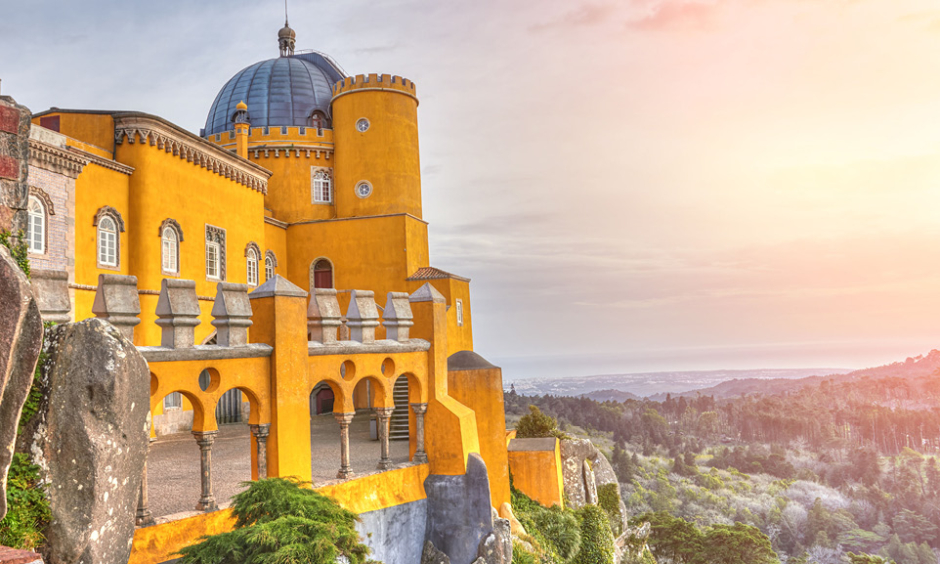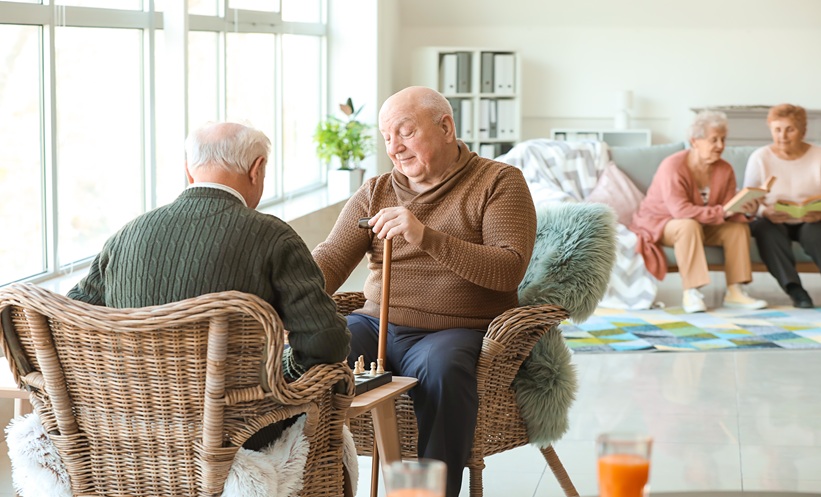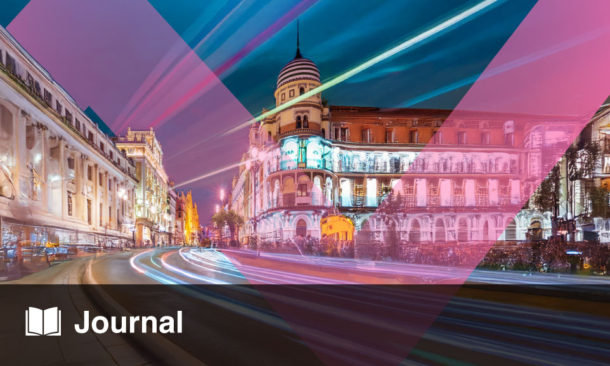Written by James Coker | Reporter, European Medical Journal | @EMJJamesCoker
![]()
The beautiful coastal city of Lisbon, Portugal, will be hosting this year’s EAN Congress, and is likely to provide soaring temperatures as well as delightful scenery for all attendees. Whilst, as usual, the congress will cover all aspects of neurology and inter-related disciplines, there is an overarching theme of neurogenetics this year. Here, a major goal of the congress is to outline clinically useful aspects of genetic medicine in neurology in the context of the increasing use of genetic methods to diagnose and treat conditions in the field. Within the confines of the spectacular Lisboa Congress Centre, professionals in neurology will observe and discuss the latest research, debate topical issues, and network with like-minded individuals. The EMJ team will be on hand to take note of all this ahead of our subsequent review of the 4th Congress of the EAN, which will appear in the next edition of the EMJ Neurology eJournal in August this year. The EMJ will also have a stand in the Exhibition area during the event, so feel free to come over and have a chat with our attending team members at any point over the 4 days!
History of the Congress
The EAN society was originally founded during a Joint Congress of Neurology in 2014 organised by the European Federation of Neurological Societies (EFNS) and the European Neurological Society (ENS). The two merged to form EAN at the event, and this brand new society had their first ever meeting the very next year in Berlin, Germany, from 20th–23rd June 2015. This congress was a major success, attracting 6,500 participants, and has remained popular ever since. Whilst this year is the first time Lisbon has hosted the EAN Congress, it did hold the 21st ENS Meeting in June 2011, in which there were 3,428 attendees.1
Last Time Out
Amsterdam, Netherlands was the location for the 3rd edition of the annual EAN Congress, from 24th–27th June 2017, and included in excess of 6,000 attendees. This was a very royal occasion, with none other her Majesty Queen Máxima of the Netherlands visiting to attend lectures and meet with leading EAN representatives! There was a plethora of notable studies presented at the event including: an analysis of the effect of overweight comorbidities on cognitive abilities; promising results of a new drug for people with chronic migraine; and a study on the extent to which substantial smartphone use can strain motor function of the hand and arm. These stories and much more were covered in our review of the congress in last year’s EMJ Neurology eJournal, which can be accessed here.
Important Timings
The always special Opening and Welcome reception begins from 18.30 on Day 1 of the congress, Saturday 16th June, in CCL Auditorium I, and all participants are strongly recommended to attend. It will feature an address from the EAN President, Prof Günther Deuschl, presentation of the Honorary Membership Awards, and a fascinating opening lecture entitled: ‘Should we concern about ethical limits in neurogenetics?’ delivered by the pre-eminent Prof Alexandre Quintanilha.
On Sunday 17th June there will be a session entitled: ‘Challenges for women in neurology’. Targeted primarily at female neurology residents and female neurologists at the beginning of their careers, the event aims to help women overcome potential challenges they could face as they progress in the field.
The exhibition area, where healthcare professionals can peruse the latest medical products and devices from pharmaceutical companies and manufacturers in addition to the stands of prominent societies and publishers in the field, will be open on each day of the congress. From Saturday 16th June through to Monday 18th June this will be between 09.30 and 17.00, and on the final day of the event, Tuesday 19th June, between 09.30 and 13.30. Members of the EMJ team will be at our stand during these times, and eager to chat to healthcare professionals from the field of neurology about how our publication can help them!2
Hot Topics
Within a variety of different session formats: Symposia; Teaching courses; Hands-on courses; Case-based workshops; Controversy sessions; Interactive sessions; Focussed sessions; Special sessions; and Career development sessions, research and ideas involving all types of neurological ailments will be on display. These include: Multiple sclerosis; Parkinson’s disease; neuromuscular disorders; stroke; familial amyloid polyneuropathy; epilepsy; cerebral small vessel disease; migraine; spinal muscular atrophy; headache; vertigo and double vision; acute hepatic porphyrias; neurodegenerative disorders; dystonia; myopathy; cerebral palsy; brain tumours; sleep; and dementia.3
Social Media
The hashtag for the congress to be used when posting on social media about the latest news and discoveries that occur is #EAN2018. This hashtag will be highly visible on the official EAN twitter account: @EANeurology and Facebook page: https://www.facebook.com/eaneurology/, both of which will be providing important updates to delegates throughout.
Likewise, the EMJ accounts @EMJReviews and @EMJNeurology will be highly active during the 4 days, and well worth following if you are heading to the event!
History of the City
One of the largest cities in Western Europe, the region now known as Lisbon was settled by Celtic tribes before the Phoenicians established a settlement there called Ulissipo. The theme of invasion continued to play a significant part of the history of the city, with the Greeks and Carthaginians conquering Ulissipo before the Romans took over and integrated it into the Roman province of Lusitania after emerging victorious from the Second Punic War in 205 BC. Following the collapse of the Roman Empire, the area was invaded by successive Germanic tribes and then in the 8th Century, Islamic Moors captured the city, naming it al-Usbuma. It was eventually recaptured by Christian forces under the command of Afonso I in 1147.
During the reign of Afonso III (1210–1279) the significance of Lisbon grew enormously, with the port becoming the base for Portugal’s maritime expansion, and it also became the nation’s capital in this period. The city continued to grow in importance and prosperity thanks to the commercial success of the Portuguese Empire until a devastating earthquake in 1755 which destroyed many of its buildings. In the Napoleonic Wars (1793–1815) which soon followed, the city was invaded by France but then recaptured by the British under the command of the Duke of Wellington.
After this era, Lisbon was at the heart of a number of political upheavals until a military coup in 1974 installed the Third Republic which led to the democratisation of the country. Today, the city is the political and economic centre of Portugal, holding a population of around 3 million within its metropolitan area.4,5
Places to Visit
There are many historical buildings to visit during a stay in Portugal’s capital, and here are just three suggestions:
Castelo São Jorge: Established by the Moors in the 9th Century, this ancient castle is visible from almost every street in the city.
Museu Gulbenkian: For art lovers, this museum is well worth a visit, housing a collection including Hellenic vases and paintings by Rembrandt and Monet.
Sintra: This hill town contains beautiful scenery, including wild woodlands and manicured floral gardens that is a delight to walk through.6
Here at the EMJ we cannot wait for the 4th Congress of the EAN to begin so we can take in the exciting research and innovative techniques from the field of neurology that will be on display. Our team members will be around the congress centre and of course present at our stand in the exhibition area, so please do pop over to say hello!
REFERENCES
- EAN. History. Available at: https://www.ean.org/History.2723.0.html. Last accessed: 23 May 2018.
- EAN. Activities and other meetings. Available at: https://www.ean.org/lisbon2018/Activities-and-other-meetings.3369.0.html. Last accessed: 23 May 2018.
- EAN. Scientific Programme. Available at: https://www.ean.org/lisbon2018/Scientific-Programme.3370.0.html. Last accessed: 23 May 2018.
- Lisbon & Beyond. About Lisbon. Available at: http://www.lisbonbeyond.pt/about-lisbon.html. Last accessed: 23 May 2018.
- Lisbon. History of Lisbon. Available at: https://www.lisbon.net/history. Last accessed: 23 May 2018.
- Mitra G, Lussiana M. Lisbon attractions. March 2017. Available at: https://www.telegraph.co.uk/travel/destinations/europe/portugal/lisbon/articles/lisbon-attractions/. Last accessed: 23 May 2018.







